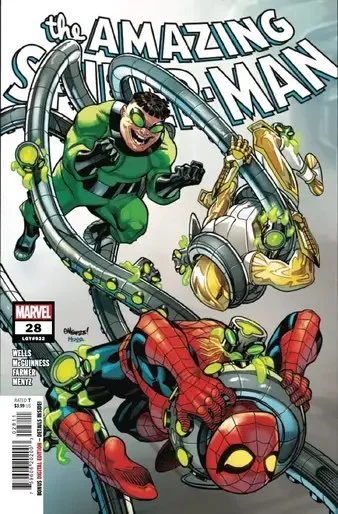X-Men: Before the Fall – The Heralds of Apocalypse #1 // Review
Apocalypse is floating cross-legged in the air as he contemplates the nature of strength. He’s hovering over a pile of blue, inhuman-looking corpses illuminated by no earthly glow beneath a starry sky. He’s not on Earth. He’s in a black and dangerous world located in another dimension. His wife has turned back the hordes of Amenth. What happens next will cause him to question a great deal more than merely strength in X-Men: Before the Fall – The Heralds of Apocalypse #1. Writer Al Ewing relates a tale of power and destiny to page and panel. The story is breathed into the realm of the visual by the art team of Stefano Landini, Luca Pizzari, Rafael T. Pimentel, and Ceci de la Cruz.
One of the fallen hordes of Amenth approaches Apocalypse. He’s not very fond of the name. He hasn’t exactly changed it to an unpronounceable symbol meaning “power”...he’s changed it to an unpronounceable symbol meaning “Revelation.” (It’s totally different. Really.) The blue demon creature wants to survive, and so it is consulting the source of its destruction. He’s asked about survival and the nature of strength, and so...he gets philosophical. Asked a pragmatic question, and he gets an abstract answer. Then, he’s killed by Apocalypse’s wife. So maybe the philosophical answer was better. Or maybe there’s more going on...
Ewing is reaching for a lot more in the confines of the script than a single story will truly allow. He’s delivering philosophical complexity to an alien pantheon that explores aspects of humanity that haven’t quite been framed by any ancient religion. It’s a time-honored tradition that goes back to Kirby’s New Gods and Starlin’s Eternals. Ewing explores somewhat poetic concepts that get into the origins of different elements in the mutant end of the Marvel Universe, but there isn’t enough substance in the story to make it a fully satisfying journey. It’s all so lost in abstract conversation. Not enough is actually happening on the page to make for a fully-rendered story.
There may not be a whole lot actually going on on the page, but the art team does an excellent job of putting it all together. The otherworldly illustrations that are present add beautifully to the strange poetry of Ewing’s script. Too bad they’re not actually called upon to do a whole lot of actual action. It’s all just strangely brutal abstract beauty that rests regally on the page, waiting for something to happen...and it never does. Not really. There IS drama. And there is action, too. But it’s all so nebulous. Far too nebulous to actually make any kind of a meaningful impact.
Ewing’s work is a progression of what has been done by others over the years, going all the way back to Louise Simonson’s creation of Apocalypse back in the late 1980s. The elements that Ewing is exploring are almost present enough in the one-shot to stand alone as a compelling pseudo-mythological story...but not quite.









